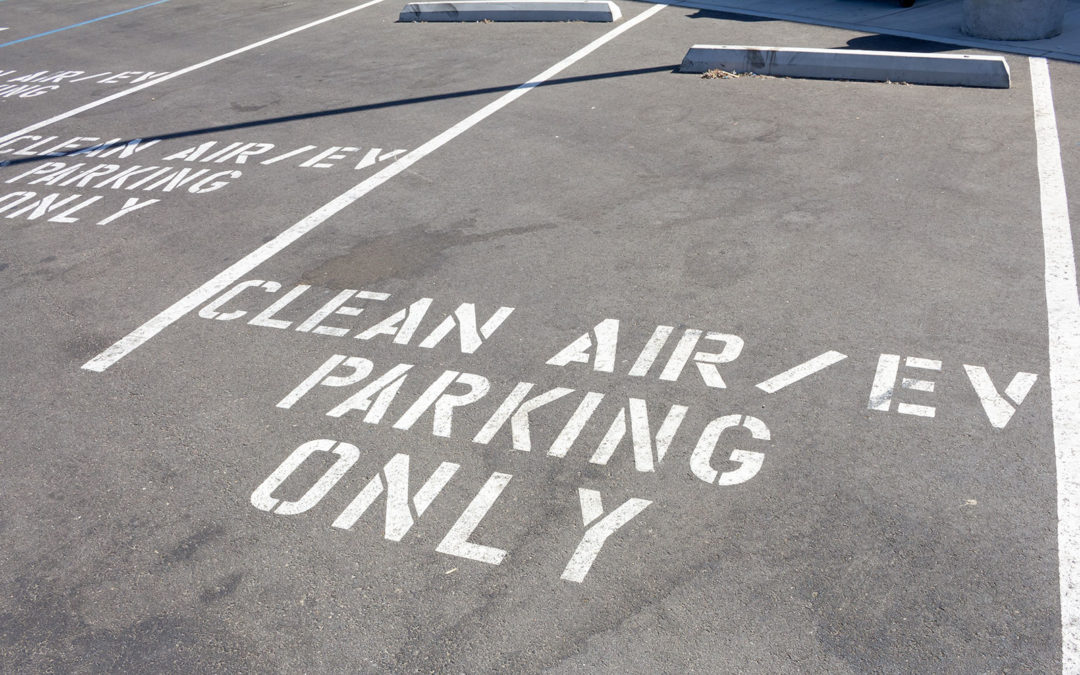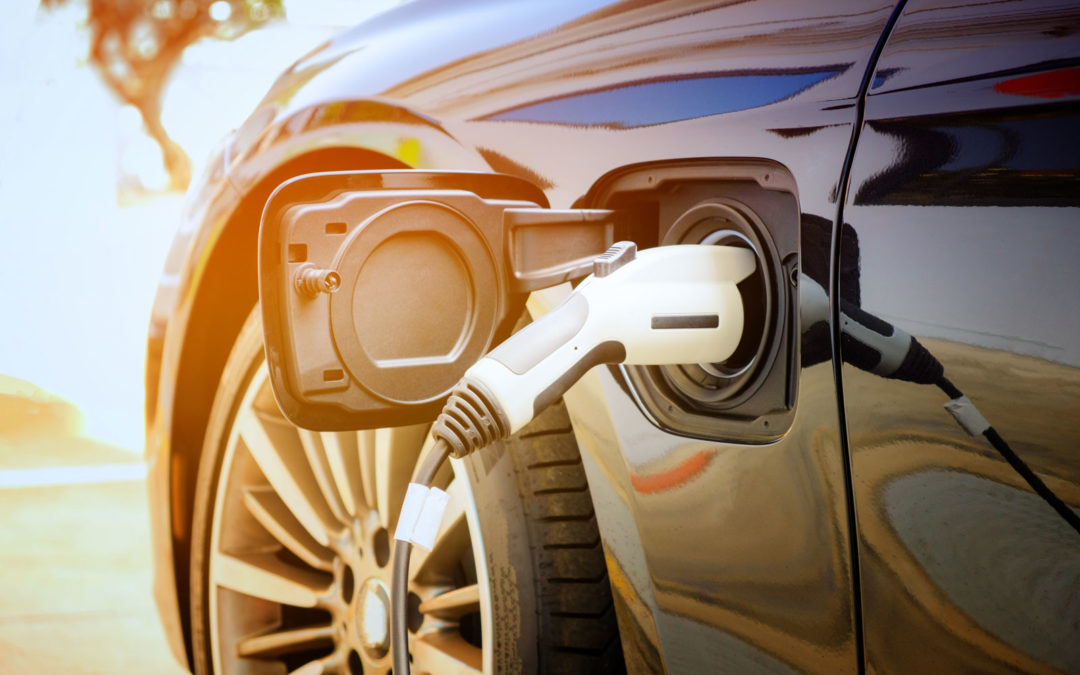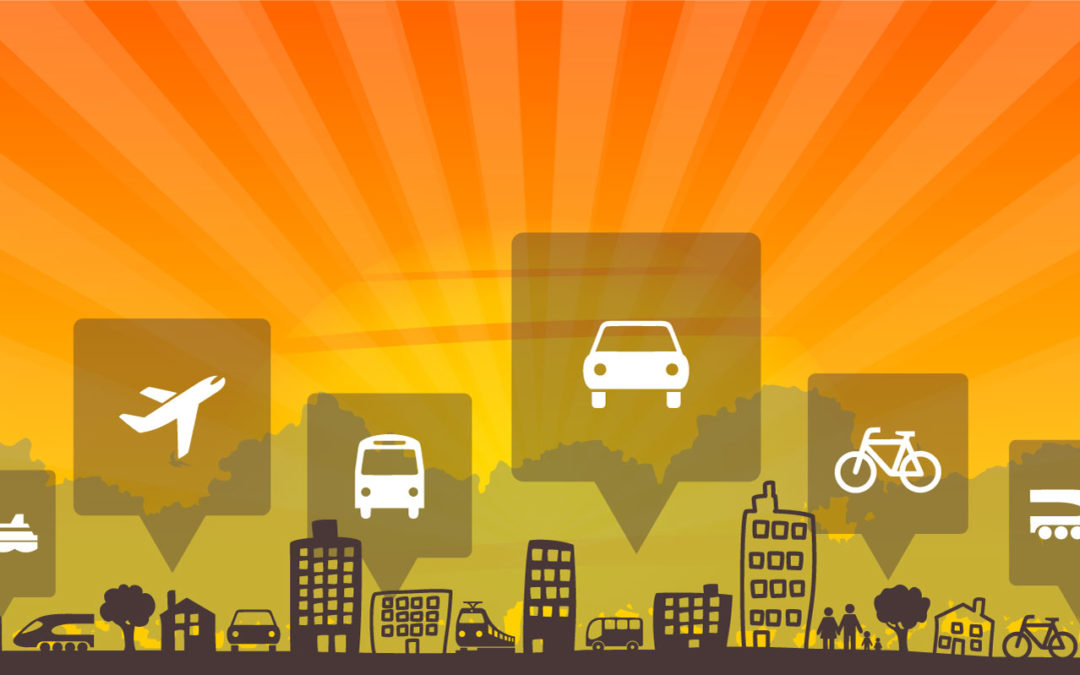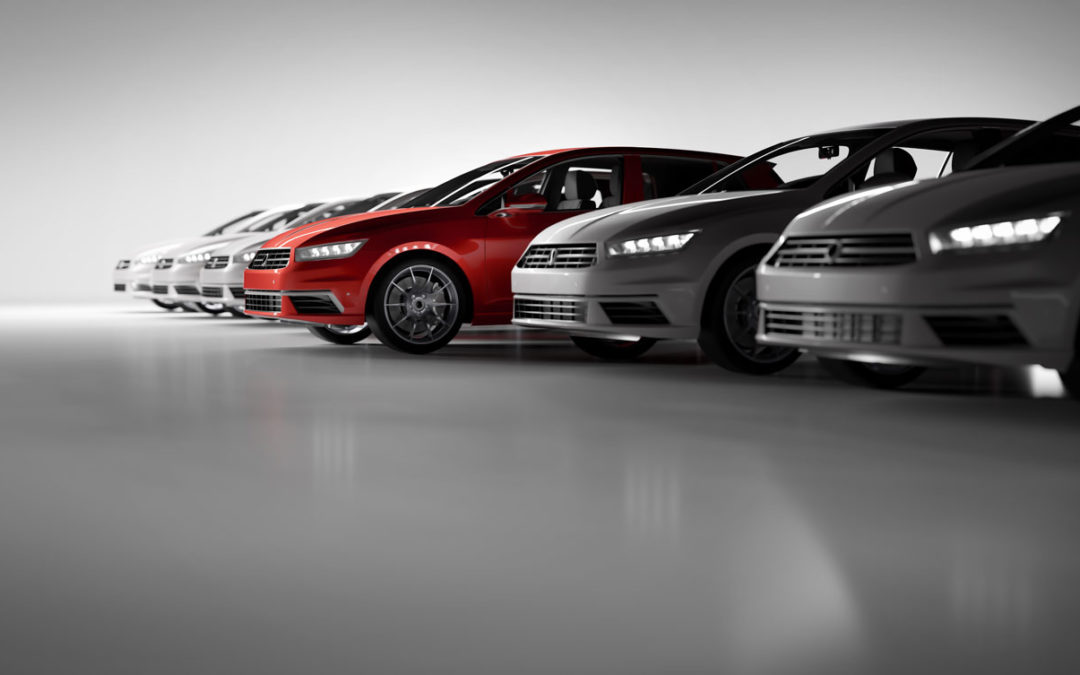
by Lauren Reeg | May 15, 2020 | Community, Electric Vehicles, Jobs, Renewables, Solar, Wind
Imagine a Wisconsin where everyone drives electric vehicles. Additionally, these cars are all powered by clean energy, like solar and wind. Besides quieter travel and different fueling stations, this vision, if realized, would yield significant economic and health benefits for individuals and communities.
With 100% electric vehicle adoption, $6 billion could stay in local economies, and residents could collectively save $3 billion on fuel.
Those are big numbers! Do Wisconsin businesses and residents really spend that much on fuel? Yes! We spent more than $6 billion on motor gasoline in 2017. A clean powered electric vehicle (EV) fleet would allow us to keep $6 billion in the state economy!
Individuals could also save a lot of money. Right now, Wisconsin electricity prices range from 10¢/kWh to 14¢/kWh. Assuming current EV fuel efficiency at .32 kWh/mile Wisconsin residents could save up to $3 billion by fueling electric vehicles with clean power each year. EV owners can also eliminate oil changes from monthly budgets.

This analysis only looks at passenger vehicle travel. If other forms of non-passenger transportation are included, like trucks and aviation, expenditures on petroleum products in Wisconsin rise to a total of $8.4 billion. Non-passenger travel technologies are still in development, but as they progress Wisconsin will have the opportunity to keep even more money in the state.
100% electric vehicle adoption would result in over $2 billion of avoided health and social impacts.
Conventional internal combustion vehicles emit toxic pollutants like nitrous oxides (NOx), particulate matter (PM), and carbon dioxide (CO2). Non-renewable power plants, like coal and natural gas, emit those same chemicals and more. These pollutants have huge negative impacts on our health like increases in childhood diseases, asthma rates and early mortality rates, which lead to huge economic burdens, as well. If Wisconsin residents employed a 100% renewable energy powered EV fleet, we could save more than $2 billion.
The impact of clean-powered EV adoption on health and the environment is substantial, because pollutants are expensive in both the long and short term. The net loss in agricultural productivity, negative human health impacts, property damages from increased flood risk, and the lost value of ecosystem services from carbon emissions is estimated at $42/ton. Passenger vehicles emit on average 4.6 tons of CO2 per year. With more than 6 million registered passenger vehicles in Wisconsin, that’s a price of over $1.1 billion per year. Additionally, particulate matter and nitrous oxides are even more costly at $380,000/ton and $7,800/ton respectively.
By saving billions in avoided health and social costs, Wisconsin can direct more investments to areas like roads, schools, police and fire protection. Every dollar we save in fuel expenditures and avoided pollution impacts can enrich the lives of Wisconsin residents.
To accommodate 100% clean-power EV use, Wisconsin would need to develop 21 million megawatts-hours (MWh) of new renewable energy .
Wisconsin currently consumes about 70 million MWh of electricity per year. To power this future electric vehicle fleet, Wisconsin would need an additional 21 million MWh, which would increase electricity generation needs by about 30%.

To help illustrate this amount of renewable energy, let’s assume that solar power will supply one-half of the additional 21 million MWh of electricity and wind power would also supply one-half of this amount. Assuming that each new renewable power plant would average 100 MW, we would need to add 52 solar farms and 35 wind farms.
Renewable energy is already one of the fastest growing job categories in the country. Currently, 76,000 Wisconsinites are employed by the renewable energy industry. Wind and solar projects employ research engineers, manufacturers, scientists, construction workers, real estate brokers, and so much more. Studies show that wind projects can create at least 2 jobs/MW per year in construction and manufacturing jobs and up to 1 job/MW in operation and maintenance jobs. The solar industry can create up to 8 jobs/MW per year for construction and manufacturing jobs with up to 2 jobs/MW in operation and maintenance. If Wisconsin employed the renewable energy mix detailed earlier, even a cautious job estimate would be over 250,000 jobs created!
The premise of 100% electric vehicle adoption powered by 100% clean energy highlights a real opportunity for Wisconsin, keeping $6 billion in our local economies and reaping $2 billion in saved social costs, while creating tens of thousands of jobs for Wisconsin residents.

by Guest Blog | May 4, 2020 | Biogas, Electric Vehicles, Renewables, Solar, Wind
Review by Don Wichert
Michael’s Moore’s film, Planet of the Humans directed by Jeff Gibbs, is a poorly researched and conspicuously one-sided example of advocacy journalism. The film’s release on YouTube coincided with the 50th anniversary of Earth Day, prompting a well-deserved panning from many writers and reviewers with deep roots in the environmental and clean energy community.
The major shift from a world dominated by fossil fuels to one run by renewable energy is a monumental shift that cannot be made over night. Gibbs narrates a description focusing almost entirely on the slowness of this shift and on the inevitable failures of various attempts to move towards a more sustainable world. Much like evolution itself, some mutations towards this goal succeed and others don’t. It’s called “learning by doing”. Unfortunately Gibbs only describes those early experiments gone badly or interviews people who are not qualified to explain the goals and the process of development that is being considered.
Much of the reporting is one sided, not researched very well, outdated, and inaccurate and is simply inexcusable. Some examples:
- Interviews with GM officials in 2010 when the Chevy Volt was introduced. The Volt has gotten great reviews over time as a first generation Electric Vehicle that also has a gas engine. However, since it is typically recharged from the electric grid, which at the time was powered primarily by coal from the Lansing based utility in 2010; it’s portrayed as a phony sustainable alternative. No mention was made of electric cars being 85% energy efficient vs. internal engines being 15% efficient (of energy in the fuel to the wheels on the road). Since 2010, about 100,000 megawatts of coal plants have been shut down and replaced by renewable energy or natural gas. So, the grid has become greener, and therefore driving an electric vehicle has become greener over time.
- In the same ten year old footage, Gibbs interviews a Lansing Power and Light official who explains how their experimental solar electric system works. The panels are low efficiency (about 8%) and the official estimates that the football sized solar field can produce the equivalent of eleven household’s annual electricity usage. In the last ten years, solar has become more efficient and the costs have dropped dramatically. Solar is now the among the most affordable ways to generate electricity in most places in the US and the world. This is not mentioned, nor is distributed solar electric power mentioned, which uses the solar energy produced and used at the site.
- Gibbs spends a lot of time interviewing Ozzi Zehmer, author of the “Green Illusion”. Zehmer makes the outrageous claim that silicon solar cells have no silicon and instead are made of quartz, coal, and rare earth metals. It is true that some carbon is added to the solar cells in the production process, but it is subterfuge to imply that more fossil fuels are used in the process then the carbon saved by the cells over their lifetime. Many studies have shown a payback on carbon from solar cells of about two years. However, there is concern that some rare earth metals will not be enough to meet an exponential demand in the future from solar panel and other electronics. Innovation in the future may be able to resolve this apparent rare earth emerging problem.
- Gibbs interviews a “solar salesman” at a trade show who said the lifetime of solar cells is “about 10 years.” However, every solar cell manufacturer offers a 25-year guarantee on their cells to produce at least 80% of the power by year 25. Although there is output degradation of about 0.5 percent per year, it likely that solar cells will be producing power many decades past their 25 year warrantees.
- The movie then shifts to wind power and singles out one potential site on the Lowell mountain in Vermont. Gibbs interviews the group of hikers that are opposed to the 21 turbine ridgeline project because it will destroy the vista and hiking that has been there before. He does not mention the environmental review that was done for the project nor that the project was approved by a 342 to 114 vote in the local town in 2009. He does not interview anyone in the area that was in favor of the project, or mention the actual impact on hunting, hiking, sound, the fossil power that it’s replacing (or other conservation measures), or the economic impact of the project. Nope, just those against the project. Gibbs also interviews others at wind construction sites, who described the amount of concrete, steel, and weight of the wind turbine projects, as if all construction of anything was bad. Does he oppose a bridge over a creek because some steel and concrete is being used?
- Gibbs also takes a slap at hydrogen used as a fuel source for autos. Even though hydrogen is not really being considered as a near-term replacement, he gets a response from a person at a trade show that the hydrogen fuel comes from fossil fuels. He does not mention that hydrogen can be made by using electrolysis of water powered by surplus renewable energy when supply exceeds demand or that the only emissions of hydrogen combustion is water.
- The film also makes short shrift of battery technology, even though battery storage is likely to become a game changer for scaling up renewable energy. Humans are on the very beginning of a tidal wave of innovation and discovery with battery storage, with new concepts and options to store more with less weight, occurring at a rapidly increasing rate.
- Gibbs and Zehmer then go to the southwest deserts where some large scale solar thermal to electricity systems were deployed. They visit the original site of the Solar Energy Generation System I (SEGS-I), built in 1986, 34 years ago. Out of the nine systems SEGS built over this time period they focused only on the first one, where it was dismantled and apparently is being repurposed to a newer system. No attempt was made to interview the owners of the system or to show the other eight systems that are merrily producing power at one of the sunniest sites in the US. Gibbs did show some footage of yucca plants and Joshua trees being cut down for the solar array construction. No energy system is completely benign, and tradeoffs are always made. The world is a lot different than it was before the advent of farming or the industrial revolution, and ethical choices of land use can always be challenged. Manhattan, Chicago, and Madison do not look like they did 300 years ago. The projects need to file environmental impact studies before they are built, but none of that is described.
- There are criticisms of the solar power towers near Barstow, CA. I never liked this concept either: large, moving parts, low thermal efficiencies, and the need for maintenance. However, it is an example of how major infrastructures shifts occur: start out with what you know (large, thermal power plants) with those who build them (Bechtel, Westinghouse) and see what happens. These plants were started in the 1980’s, and in this case, their failures will hopefully lead to learning.
- Gibbs also attacks environmentalists for taking funding from fossil fuel interest groups like the Koch brothers and others. The optics don’t look good, but most large corporations, energy or others, have a diversified portfolio of projects with new and old technologies. Sometimes old money is a major contributor to a better world in the future like the Carnegie libraries or the Rockefeller Foundations. Gibbs targets the Green Century Fund and cherry picks several companies that have a dirty image, but fails to highlight which part of these companies are being supported in the fund.
- The film charges that any business that claims to be 100% renewably powered while remaining connected to the utility grid is engaging in deception. In point of fact, it is possible to be 100 percent renewably powered and still use some power from the grid when needed, so long as the customer offsets its draw from the grid with an equivalent amount of excess renewable energy. Until batteries are more developed, having backup sources of power, whether from the grid or other means, makes total sense. There is a picture of Tesla’s mega battery plant before the roof was covered with solar electric panels, implying that Elon Musk was lying when he said the plant would be 100 percent renewable since it would still be connected to the grid. They also showed some diesel generators being used for back-up power at an Earth Day concert.
- But Gibbs biggest gripe is with bioenergy. He never explores the major renewable premise that biomass is recent solar energy stored in plants, or that most of the biomass feedstock is from wastes that would otherwise oxidize and slowly release methane and carbon dioxide in the process. He shows the McNeil wood-fired power plant in Burlington (VT), with piles of trees and wood chips outside ready to be burned. He never explores that 95 percent of this feedstock comes from timber product residues, culls left over after other logging operations, land clearing for development, tree trimming for power lines, forest thinning, or even dedicated biomass farms for fuel. He did not interview the fuel procurement personnel or say anything about the environmental scrutiny that is required in the fuel procurement process or anything about the sustainable guidelines that must be followed.
- He also makes light of a biogas digester at a zoo that takes elephant manure to produce energy. He does not explore the concept of modern biogas digesters and how they take raw manure from large animal operations, or landfill and wastewater treatment gas and make electricity and pipeline quality gas. Nor does he say anything about the reduction in pathogens and smell from these operations and the production of biosolid fertilizers.
- The film interviews a number of people living near solid waste incinerators as part of the biomass-to-energy portfolio of bad projects. It’s true that the track record of waste-to-energy plants has been spotty at best, but this is another example where projects started in the 1980’s to hedge against the energy crisis are now no longer being built. Mistakes were made, and from them, other ways to tackle problems emerge. Figuring out how best to recycle tires, hazardous wastes, and plastics is still a major problem to be solved.
There certainly are legitimate arguments being made that we humans are having a deleterious impact on the planet: over fishing of the oceans, acidification of the oceans destroying reefs, climate change impacts of more intense and frequent storms and droughts and ecosystem shifts, ground water depletion, plastic pollution, and too many people wanting too much stuff. But in Gibbs and Moore’s eyes, the glass is not half empty, but is almost dry. He completely ignores any discussion by the vast army of individuals, governments, and companies trying to fill the glass back up with clean water. No, everything anybody does is bad and evil according to the film. That includes Al Gore, Bill McKibben (founder of 350.org), Michael Brune (ED of Sierra Club), Michael Bloomberg, whose philanthropy underwrites Sierra Club’s Beyond Coal Campaign, and Dennis Hayes, coordinator of the first Earth Day in 1970. According to Gibbs, all environmental leaders are phonies and have sold out for themselves and their imperfect goals.
Renewable energy is still at an early stage of development and huge progress is being made at an accelerating pace. The first auto was made in 1885 and every year new innovations are being made. It’s almost impossible to conceive what we humans will be using for energy in the years ahead, but progress is being made every day.
The beginning of the film asks about 10 people off the street how long they think humans will survive. Guesses range from about 10 years to infinity. So there are a lot of opinions, some positive and some negative. Unfortunately, this film is all negative. It was probably meant to sound like a canary call in a coal mine, but it was way too one-sidedly negative. Things may be bad, but looking over human history, as Dr. Pangloss said in Voltaire’s Candide, “it’s the best of all possible worlds.” Too bad Moore and Gibbs didn’t do a better job researching to provide a balanced and more positive perspective on getting to the best of all possible worlds.
I cringe thinking of how right-wing media will use this film to cast doubt on the value of renewable energy and the purposeful goals of those involved in trying to make a more sustainable human earth.
Don Wichert is a self-proclaimed “Energy Geek”, with college degrees in Geography, Thermal Engineering, and Energy Analysis & Policy. He worked at the Wisconsin Energy Office for 23 years as Chief of the Energy Resources Section, was Director of the Focus on Energy Renewable Energy Program for six years, and interim Director of RENEW Wisconsin, a group he founded in 1989, for 16 months. He has served on a number of national nonprofit boards, including the Interstate Renewable Energy Council, the Clean Energy States Alliance, and the Biomass Energy Research Center. He lives in Madison, WI.

by Jane McCurry | Apr 6, 2020 | Community, Electric Vehicles, Health, Renewables
It’s been two weeks since Governor Evers’ Safer at Home Order came into effect. Our thoughts are with everyone affected by COVID-19 and those working to keep our communities safe and healthy.
This “new normal” means vehicles are staying parked, stores are temporarily closed, and the way we use energy is changing dramatically. In many large cities normally plagued with air pollution, it means unprecedented blue skies and fresh air. Experts predict this flow of fresh air will only be temporary, but here at RENEW, we are working toward a future where our air is always clean. We know this reality can be achieved with more renewable power and electrified transportation.
Less Travel Means Cleaner Skies
From China to Chicago, air quality has improved exponentially since stay-at-home orders were initiated. In Chicago, the nitrous oxide levels in the air have decreased dramatically, and it’s estimated that the improved air quality in Wuhan, China has saved 50,000 lives. All over the internet you can find pictures of the Venice canals and Los Angeles Valley looking cleaner than we’ve seen in decades.
We are by no means doing a cost-benefit analysis on the coronavirus impacts – the devastating impacts of this novel virus will be felt for years to come. However, it can be a useful and important reminder that clean air is better and possible for everyone. There is mounting evidence that poor air quality can actually make people more susceptible to catch COVID-19 and other respiratory viruses, and it could make treatment more complicated too.
Clean Energy Makes Resilient Communities
This newfound clean air can stay. Clean energy technologies like the ones RENEW has been touting for decades have the ability to keep our air clean and our communities safe. Electric vehicles don’t have a tailpipe; they operate without producing emissions in densely populated areas. Clean power generation means areas near power plants no longer suffer the negative health impacts of fossil fuel emissions.
When our health is secure and we start to rebuild our economy, it’s important that we lock in the benefits that clean air can offer us. Now, more than ever, we need to prioritize the public health benefits of accessible, affordable, clean and safe energy.

by Jane McCurry | Feb 6, 2020 | Electric Vehicles, Policy
Electric Vehicle chargers are once again eligible for a tax credit
An amendment on the Federal year-end spending bill reinstated electric vehicle charger tax credits that expired in 2017. The credits will cover 30% of the cost to install an EV charger with a maximum credit of $1,000 for individual taxpayers and $30,000 for businesses. The credit will be available through the end of 2020. To claim the credit, use IRS Form 8911.
This is a big deal! The market for electric vehicle charging is still nascent, so any incentive for EV charging is a big win. Not only will it help individuals with the upfront cost of installing EV charging at home, this tax credit will help Wisconsin businesses, from workplaces to multifamily buildings, provide EV charging in their community. We hope this will be another step in the right direction for EV adoption in Wisconsin.
If you’re interested in installing public EV charging stations, check out our factsheet to learn more about why installing EV charging is a good idea and how to do so successfully.
Electric motorcycles are also eligible for $2,500 in tax credits
The amendment also extended credits for electric motorcycles. Buyers can now receive a tax credit of 10%, or a maximum of $2,500. Good news if you’re in the market for the new all-electric Harley Livewire!

by Jane McCurry | Dec 31, 2019 | Electric Vehicles, Sustainability
In the very first edition of the RENEW Wisconsin Electric Vehicles Blog, I shared my transportation story. That was over a year ago, and now we are approaching a new decade, which will be sure to bring just as much change as the last. Here’s a quick rundown of what I see as the biggest transportation changes over the past 10 years, what’s coming next, and how I plan to clean up my own transportation use in 2020.
10 years of transportation
In 2010, 3 days after my 16th birthday I got my driver’s license, kickstarting my experience with personal transportation.
In 2015, I purchased a red (Go Badgers!) 2010 Ford Escape. I didn’t even think about buying an electric car. Sometimes, I opted to drive my car because it was warm and easy, despite having the option to reduce my emissions by walking, taking the bus, driving my moped, or biking.
Then, in July of 2018, I started working at RENEW. I was immersed in clean energy – and quickly realized that my transportation choices didn’t align with my values.
I spent a year learning as much as I could, evaluating my lifestyle, and crunching the numbers on an EV purchase. I bought a Tesla Model 3 and moved to an apartment with solar on the roof. My husband and I are an all-electric, one car household. I call a rideshare when I need it – and in Madison, I can call an all-electric rideshare with Green Cab.
This is not the transportation future I imagined when I started my transportation story in 2010. I have more options, and produce fewer emissions, than I could have imagined 10 years ago. Madison is a walkable city that has an all-electric cab company, BCycle electric bikeshares, beautiful bike paths, and an extensive bus system that is being renovated and electrified. I can (and do!) take advantage of these options to live my clean energy values more fully.
A clean energy resolution
As I reflected on my personal transportation choices this decade, I decided to make Clean Energy Resolutions for 2020:
- Buy carbon offsets for my air travel.
- Try not to rideshare alone. I will bus when possible and call a Green Cab when I need to, reducing my solo rideshare trips (it’s not really “sharing” when I’m the only one in the car that needs to go there).
How has your personal transportation evolved over the decade? What would your Clean Energy Resolutions be?
Here are a few options to dip your toe into a clean energy transition this year:
- Pledge to take the bus once a week in January
- Instead of a “swear jar” have a “lights jar” at home – anyone caught leaving a light on when they’re not in the room owes the jar $1
- Take part in National Bike to Work Day this May, bonus points if you get coworkers involved
- Look into your utility’s green power program, or other ways to offset your home’s electricity use, like solar
- Test drive an electric car (I bet you’ll like it!)
- Become a RENEW Sustaining Member
- Get a solar site assessment – at home or your work – to see if solar is right for you. See our list of trusted installers here
What will next decade hold?
This decade saw a lot of change in the way people get around. Rideshares like Uber and Lyft became common, electric scooters took over sidewalks nationwide, and electric vehicle sales tipped over 1 million in the U.S.
I expect that next decade it will be even easier to get around with enhanced micromobility options, cleaner buses with more bus routes, and more electric vehicle models than ever. These transitions are happening nationwide and Wisconsin is no exception. In addition to Madison, La Crosse, Milwaukee, and Racine all have electric buses ordered. Madison is working toward bus rapid transit, which will make commuting faster, cleaner, and more equitable for thousands of Wisconsinites. Micromobility is happening everywhere too – the founder of Bird Rides, one of the big scooter-sharing companies, grew up in Appleton! And, there are bikeshares in cities as small as Wisconsin Rapids and as large as Milwaukee. Together, these options will make it easier to get where you need to go, with fewer emissions.
For passenger vehicles, expect 200 different EV models to be available by 2025, giving us more size, shape, price, and brand options in the electric vehicle market. To add to it, I am really excited to see how the transition to autonomous vehicles will play out, especially as we transition to electric and shared mobility at the same time.
Buckle up, it’ll be a fun ride!

by Jane McCurry | Nov 26, 2019 | Electric Vehicles
The Energy Gang, a Green Tech Media (GTM) podcast, dives into energy, clean technology, and environmental issues. We’re very excited to welcome Katherine Hamilton, one of the show’s co-hosts, as our keynote speaker at our annual Renewable Energy Summit to take place on Thursday, January 16, 2020! Katherine is also the Chair of 38 North Solutions, a public policy firm focused on clean energy and innovation, which she co-founded.
While we wait for Katherine’s visit to Wisconsin in January, we’re listening to The Energy Gang Podcast. I was especially intrigued by the October 26 episode, “Who’s Trying to Re-Kill the Electric Car?” The title is a spoof on the film, Who Killed the Electric Car? which came out in 2006. The documentary is a reminder of previous attempts to make electric vehicles mainstream. In 1997, after a California air emissions mandate, General Motors launched the EV1, the first electric vehicle made for the mass market. After only 6 years on the market, the EV1 was recalled and the vehicles were destroyed.
This Energy Gang episode digs into the question: Are we in the midst of the same story at a grander scale?
Who (if anyone) is re-killing the electric car?
There is certainly momentum in the EV market that points to a long and prosperous life for today’s electric cars. Bloomberg New Energy Finance says 57% of passenger vehicles sales could be electric by 2040. EVs are already cost competitive, with a lower cost per mile to operate and very little maintenance.
With more and more electric vehicles, we demand less and less gasoline. This sets up an interesting dynamic between oil companies and electric utilities. While these industries have often agreed (or left each other alone) on big policy issues, they’re beginning to fight over the market to fuel our vehicles.
We’re just beginning to see how this conflict will play out. Transportation is a huge market – Wisconsin alone spends $8.4 billion per year (yes, that’s billion with “b”) to fuel our vehicles, all of which is sent out of the state, and much of it out of the country, to purchase liquid fossil fuels to run our vehicles.
It’s no surprise that oil and gas companies see electric vehicles as a threat. In fact, many of them are pivoting to include electric vehicle charging in their line of services. In Europe, gas companies own a lot of the public charging infrastructure and BP recently bought Greenlots, a charging station software provider.
What about our local gas station owners? The Energy Gang says they don’t seem to care that much, but they are considering installing EV chargers. Gas stations could somewhat easily switch from one fuel to another, and keep people buying items in their convenience store, where they make the bulk of their profits.
How to Make Sure EVs Survive This Time
Utilities stand to gain from a growing electric vehicle market, and they are catching on fast. As energy efficiency has made big gains, overall electricity consumption is growing more slowly than it has in the past. Electrifying vehicles and other appliances is a real growth opportunity for power companies. Five years ago, utilities weren’t proposing programs to promote electric vehicles except in California. Now, utilities in 25 states have plans to invest in public electric vehicle charging.
In those 25 states, at least 10 have oil-affiliated groups pushing back. In Wisconsin, we are working hard to get the facts out about electric vehicles and make sure consumers and decision-makers understand the benefits of this transition, and the downsides to our current, expensive transportation fuel:
- EVs are for everyone. EVs are already cheaper to own and operate, and the costs of the vehicles themselves are coming down fast.
- EVs are better for the environment and will continue to get cleaner as our grid gets cleaner. Internal combustion engines, on the other hand, only get dirtier over time.
- In our view, power companies, government, and private businesses should be working together to build the charging network needed to support these vehicles, just like we built roads when cars first came along.
We’re watching this story unfold in Wisconsin. The Wisconsin Public Service Commission opened a docket to investigate the electric vehicle market and explore the roles that utilities and regulators could take in this new market. Stakeholders are welcome to participate in this docket. So far, dozens of organizations and individuals have submitted comments ranging from supportive and excited to questioning or downright anti-electric vehicle.
Our hope is this docket will help to build clarity and momentum in the market. We have allies who also believe in this transition, and we will continue working together to make sure the electric vehicles of today survive.
Consumers are driving the transition
Electric vehicle adoption will be in an exciting transition and one that I’m grateful to take part in. I was 2 years old when the 1997 EV-1 came to market. Had it not been “killed,” maybe my first car would have been electric? We’ve come a long way since then. Now, consumers are driving the EV market and demanding high quality electric cars. The market is delivering and we should keep it thriving.
If you want to learn more about electric vehicles and clean energy, you should attend our Renewable Energy Summit on January 16, 2020 in Madison, Wisconsin! Keynote Speaker Katherine Hamilton will be discussing these issues and more. Our Presenting Sponsors are on the cutting edge of our clean energy future, with Invenergy developing large-scale solar and wind projects and Zerology establishing the nation’s first all-electric taxi fleet!








